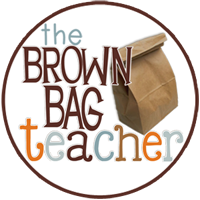skip to main |
skip to sidebar
Reading in the Wild Summer Book Study Chapter 1
I'm also linking up with the Reading in the Wild by Donalyn Miller book study today. Since this is the first time I'm linking up, I'm going to share my thoughts and reflections on all of chapter 1. To see the schedule and read the posts from last week on the first half of chapter 1, see the book study landing and information page here. It's hosted by Catherine at

Reading in the Wild is the perfect companion read to Notice and Note. Notice and Note is all about helping students understand and comprehend the text and Reading in the Wild is about building students as readers; a perfect pairing. I really appreciate all of the experience that Donalyn shares. It's all about how it's worked for her in her classroom and she's not shy to admit that it might work differently for other teachers. She shares examples of the forms she uses and blank ones, however she encourages teachers to adjust the forms to fit their style and needs. This first chapter concentrates on noticing student reading habits and supporting students in developing better ones when needed. I'm thinking that a reading inventory might be good for my students to do around late October and again maybe in February. It would be great to compare the differences over time. Donalyn suggests perhaps doing this in the spring, but I fear that's too late for students to recognize some patterns about themselves as readers. In October, we're established enough in routines and expectations that I think it might be a good time to inventory, reflect and make some goals.
I loved the idea of the reading time observation. Making it more concrete by recording observations is just what I needed to hear. I feel like I do a lot of anecdotal observing and assessing, but it would be so much more helpful to me to record it. I've gotten away from that and this was a good reminder to me, not only for those I suspect of being fake readers, but in all aspects of my classroom and teaching.
I also had an aha when Donalyn shared how she worked with "Nathan" after observing him. Not only did she talk with him about specific ways to change and improve, they wrote the goals down. Again, writing it down is key. She says, "With students who struggle to complete books or set attainable reading goals, writing page goals into their planners or reader's notebook holds them accountable and helps them see that they will finish a book if they read a little bit each day."
She also validated my plans to have students respond and write about their reading using edmodo. She mentioned doing exactly what I was planning to do, which really helped me know that I was going in the right direction.
The final section of chapter 1 is about scheduling. She shares her schedule and some additional options. Again, she really iterates that you have to create a schedule that works for you. Here's the schedule I had last year, including my language arts time. I'll post about my schedule for next year when I have that figured out. It all depends on when my principal schedules specialists and intervention times for us.
Schedule in my classroom:
9:00-10:10 Guided Reading and Literature Activities
10:15-11:25 Math
11:30 Specialists (Rotated among P.E., visual art, library, math extra, drama/music)
12:00 lunch
12:40 Shared reading (lesson from our basal text, Journey's)
1:10 Read Aloud
1:20 Writing
2:00 Recess
2:15 Science / Social Studies
3:15 Dismiss
What is your basic daily schedule?





















I really like the idea of incorporating technology into reading by allowing students to respond to reading through this medium.
ReplyDeleteMisty
Think, Wonder, & Teach